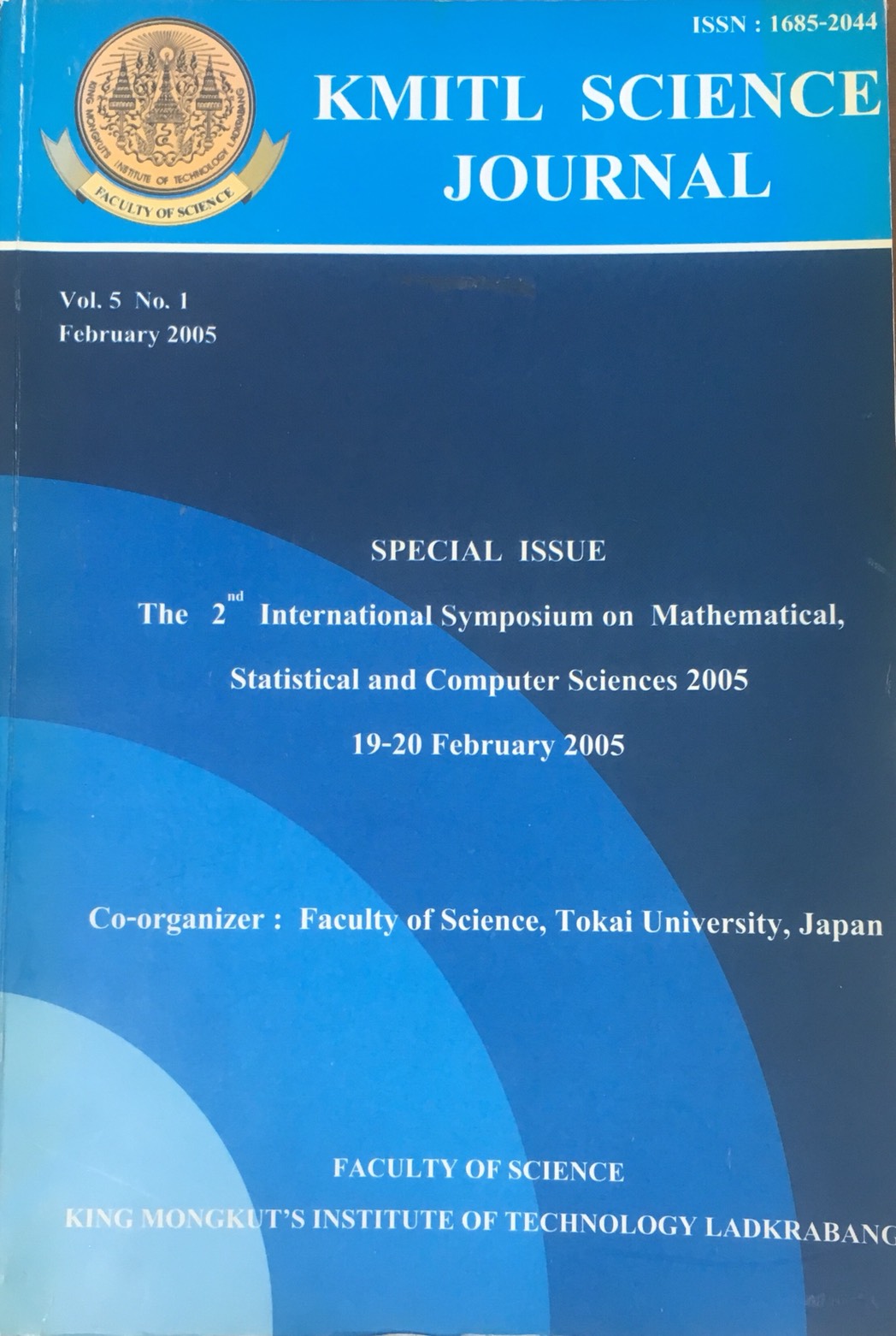A Shape-Matching Technique Using Skeletal Graphs
Main Article Content
Abstract
A novel shape-matching algorithm using skeletal graphs in this paper. The topology of skeletal graphs is captured and compared at the node level. Such graph representation allows preservation of the skeletal graph’s coherence without scarifying the flexibility of matching similar portions of graphs across different levels. Using appropriate sampling resolution, the proposed approach is able to achieve a high recognition rate, and at the same time, significantly reduce space and time complexity of matching. This approach is tested against the Directed Acyclic Graph (DAG) method on noisy graphs and occluded or cluttered scenes. The results show that this approach is an effective and efficient technique for shape recognition.
Keywords: Skeletal graph, graph matching, shape recognition, shock graph
Corresponding author: E-mail: khnualsa@kmitl.ac.th
Article Details
Copyright Transfer Statement
The copyright of this article is transferred to Current Applied Science and Technology journal with effect if and when the article is accepted for publication. The copyright transfer covers the exclusive right to reproduce and distribute the article, including reprints, translations, photographic reproductions, electronic form (offline, online) or any other reproductions of similar nature.
The author warrants that this contribution is original and that he/she has full power to make this grant. The author signs for and accepts responsibility for releasing this material on behalf of any and all co-authors.
Here is the link for download: Copyright transfer form.pdf
References
[2] T.B. Sebastian, P.N. Klein and B. B. Kimia. Recognition of Shapes by Editing Shock Graphs. ICCV, pages 755-762, 2001.
[3] T.B. Sebastian, P.N. Klein and B. B. Kimia. Alignment based recognition of shape outlines. IWVF, pages 606-618, 2001.
[4] S. Belogie and J. Malik. Matching with shape contexts. CBAIVL, 2000.
[5] S.C. Zhu and A.L. Yuile. FORMS: A flexible object recognition and modeling system. IJCV, 20(3), 1996.
[6] H. Blum. A Transformation for Extracting New Descriptors of shape, pages 362-380, MIT Press, 1967.
[7] http://www.cs.toronto.edu/~dmac/download.html
[8] http://www.cs.ucf.edu/~nual/proof.doc
[9] F. Harary. Graph Theory, Addison-Wesley, Reading, Massachusetts, page 35, 1969.


